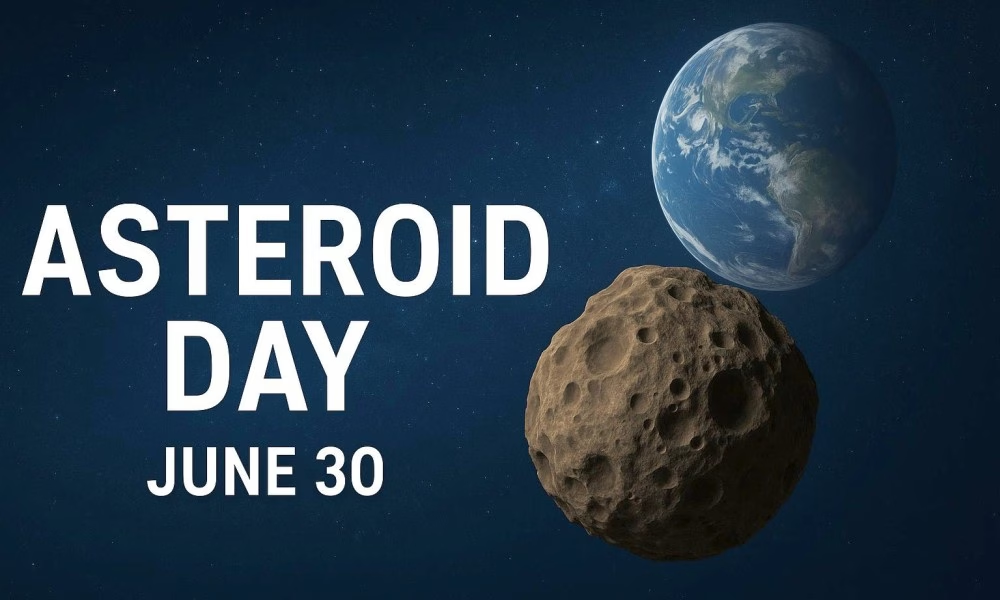
Each year on June 30, people around the world observe Asteroid Day, an awareness campaign dedicated to understanding the risks posed by asteroids and preparing for potential future impacts. The date commemorates the Tunguska event, a mysterious explosion that flattened nearly 800 square miles of forest in Siberia in 1908. Though no crater was found, the blast was later confirmed to be caused by an asteroid or comet exploding in the atmosphere.
Asteroid Day was founded in 2014 by a diverse group of scientists, astronauts, and artists, including Queen guitarist and astrophysicist Brian May, astronaut Rusty Schweickart, Danica Remy of the B612 Foundation, and filmmaker Grigorij Richters. Their goal was to increase public awareness of the asteroid threat and to call for greater detection efforts. In 2016, the United Nations officially designated June 30 as “International Asteroid Day.”
From Tunguska to Today: Why It Matters
While most asteroids orbit harmlessly between Mars and Jupiter, some enter near-Earth space and pose a real risk to life on our planet. Early detection is the key to preventing disaster. Even relatively small asteroids can cause significant damage if they strike or explode in the atmosphere.
The Tunguska event is a classic example. Scientists estimate the space rock was only about 50 meters wide, yet the explosion released energy equivalent to 10–15 megatons of TNT. More recently, the 2013 Chelyabinsk meteor exploded over Russia with a force of nearly half a megaton, damaging buildings and injuring over 1,000 people due to shattered glass—despite the asteroid being just 20 meters wide.
Asteroid Day aims to raise awareness of these dangers. The campaign launched the “100X Declaration,” signed by thousands of scientists and advocates, calling for a hundredfold increase in the rate of asteroid discovery. The goal is to locate and track as many hazardous objects as possible before it’s too late.
U.S. Leadership in Planetary Defense
In response to the growing awareness of asteroid threats, the United States established the Planetary Defense Coordination Office (PDCO) in 2016. PDCO oversees efforts to find, track, and characterize near-Earth objects (NEOs), and to coordinate possible response strategies.
Some of the most significant efforts include:
- Near-Earth Object Observations Program, which funds ground-based telescopes across the country to scan the sky nightly.
- ATLAS, a global telescope system designed to detect small asteroids on a collision course with Earth, offering a last-alert warning system.
- DART (Double Asteroid Redirection Test), a 2022 mission that successfully altered the orbit of an asteroid by crashing a spacecraft into it—proving that kinetic impact could be a viable planetary defense tool.
- Upcoming missions, like the Psyche mission and expanded telescope networks, will further boost detection capabilities and scientific understanding of these rocky bodies.
Congress also passed the Near-Earth Object Survey Act, which tasks NASA with identifying 90% of asteroids larger than one kilometer in diameter. The broader aim is to catalog smaller, yet still dangerous, objects as technology improves.
Asteroid Day in the United States
Across the country, Asteroid Day is observed with public events at museums, observatories, schools, and science centers. These include telescope viewings, guest lectures, youth STEM workshops, and interactive exhibits. Astronomy clubs and educational institutions often host local events to engage communities in the science and importance of planetary defense.
Virtual events and live-streamed lectures allow broader participation, bringing asteroid science into classrooms, homes, and libraries. The day has grown into a major platform for public outreach and scientific engagement.
Texas and the Asteroid Question
While Texas has not yet hosted a major flagship Asteroid Day event, it has all the infrastructure and expertise to play a significant role in asteroid science and outreach. For example:
- The McDonald Observatory in West Texas is a world-class research facility that could easily incorporate Asteroid Day into its public programs.
- Cities like Houston, home to NASA’s Johnson Space Center, are natural hubs for space education and planetary defense conversations.
- Texas universities with strong astronomy, aerospace, and engineering departments are ideal partners for public and scientific events.
Texas also has economic reasons to care about planetary defense. A large asteroid strike—even one in the Gulf of Mexico or a sparsely populated part of the state—could disrupt oil production, power grids, and transportation infrastructure. Understanding and supporting asteroid defense isn’t just about astronomy; it’s about safeguarding economic and public security.
Looking Ahead: 2025 and Beyond
Asteroid Day 2025 marks a major milestone—a decade since the event’s founding and global expansion. At the same time, missions like NASA’s Psyche and the expansion of international tracking systems like ATLAS are transforming our ability to detect and possibly deflect dangerous objects. Public awareness continues to grow, and more communities are beginning to embrace the importance of planetary defense.
Texas, with its academic strength, aerospace presence, and public enthusiasm for science, is well-positioned to become a leader in Asteroid Day observance and asteroid-related research. Local astronomy clubs, educators, and science museums can use this moment to elevate Texas’ role in protecting the planet.
In Summary: Asteroid Day isn’t just about space—it’s about Earth. It’s a time to remember past events, understand current risks, and take action to prepare for what may come. Whether through community education, scientific advancement, or national coordination, this annual reminder urges us all to look to the skies—and be ready.




